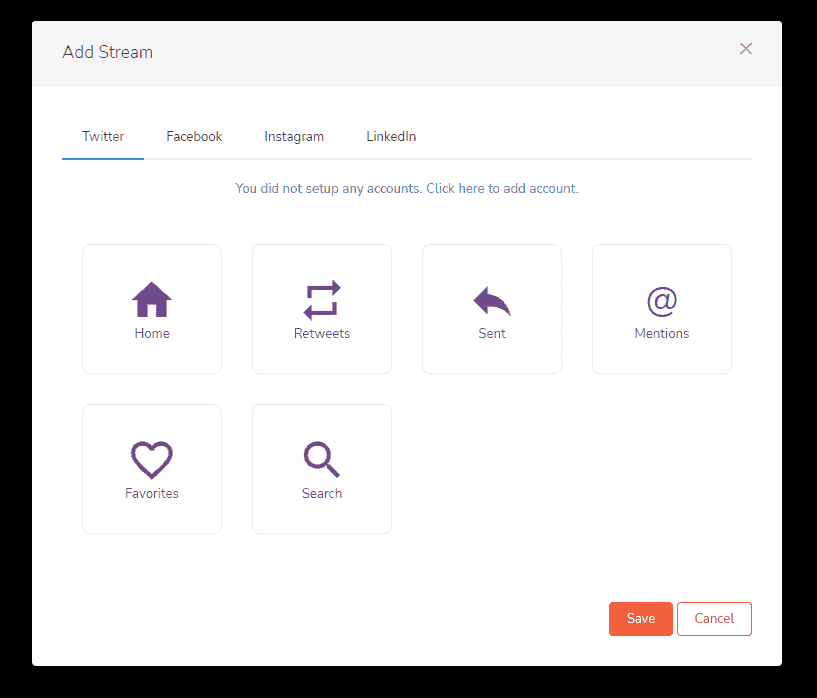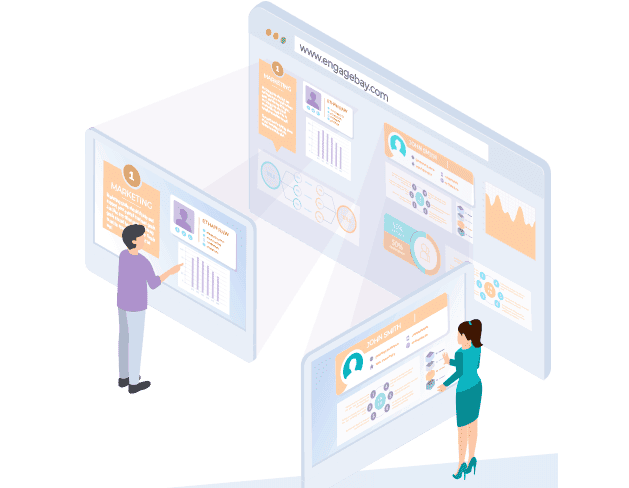Closing a sales deal is never easy.
For most salespeople, closing a deal is the final step to making the client convert into a paying customer.
The truth is that it’s not necessarily the easiest part of the sales process, but it’s by far the most important one.
Having said that, one of the greatest myths surrounding the upper echelons of the sales pantheon is that some people are just born with the ‘it’ factor that naturally makes them amazing salespeople, and they have no need to learn new sales strategies.
That couldn’t be further from the truth.
In fact, most of the high-achieving salespeople and top earners in their respective industries are also some of the most highly trained and knowledgeable individuals when it comes to knowing how to sell.
But you don’t have to be born with the gift of gab or rely on secret tricks—you just need some guidance.
So, in this blog post, we’ll share with you a handful of awesome sales tips that you won’t find elsewhere.
Read on.
Table of Contents
#1. Increasing your sales… with science!
This is the first and possibly the most crucial among our tips for success. It is priceless sales advice for a sales decision-maker.
Many people think closing sales deals is as simple as delivering a sales pitch or making a sales call. Selling involves a lot more than that. You must refine your sales technique to draw in a potential clients.
One of the wonderful aspects of our current enlightened age is that you can track your results and test theories with rigorous scientific inquiries.
This method of understanding has, obviously, revolutionized the way we live our lives and the tools we have at our disposal. Sales have been no exception to this.

The more information we’ve collected on how the human mind perceives a product or service and engages with the act of purchasing has proven to be a goldmine for understanding the underlying causal factors for how we make decisions.
Furthermore, the influence of science on sales and business has led to the adoption and ascendancy of incredibly powerful predictive suites that are actualized in selling techniques such as sales forecasting.
Of course, the use of data in business is nothing new, however, it’s important to understand the function of such practices in the broader scientific context and overall rationalization of the human industry over the past century.https://www.engagebay.com/blog/sales-call-recording/
#2. Fusing sales and science
At this point, you might be thinking, “Wait, this is all very high level and academic, how is any of this going to help me hit my quarterly goals?” Well, you’re in luck.
Science-based selling is a style of sales that merges all these advancements to directly boost sales performances in every part of the sales pipeline.
One crucial part of this sales tip is that the focus of science-based sales puts the buyer front and center by crafting a buyer persona. It uses the insights generated by the scientific sales methods to peer into the prospective customer’s psyche and how to influence it to make a sale.

That all sounds pretty mystical at first, but all that scientific selling is doing is applying an understanding of what’s already happening in most buyers’ minds and adapting their sales strategy accordingly.
The human brain is set up to make purchases and decisions in a specific way. This sales method is just delving into what’s been happening since the beginning of humanity.
You can enhance sales efficiency using powerful automation with EngageBay.
#3. Leverage the power of ambiverts
Returning to the idea that some people are just “naturally” good at sales, it’s often assumed that the person with the most social energy, the most aggressive extrovert, is going to close more sales than someone who’s comparably quieter and more introverted.
Despite this, it’s been found that people who possess a mix of extroverted and introverted qualities – the elusive “ambiverts” – actually make better salespeople than their more aggressive, outspoken peers.
Ambiverts have a unique combination of properties that make them extremely adaptable in social situations. They are much more heavily influenced by environmental factors than either extroverts or introverts, and are comfortable in matching the tone of their surroundings regardless of the situation; they might be loud and boisterous at a party while being quiet and reflective during an important conversation.
Furthermore, this means that ambiverts can correctly intuit when to seize opportunities as well as identify when they should bide their time and let someone else take center stage.

This ability to reflect their surroundings in such a seamless way means that people who are naturally ambivert or who practice ambivert traits in their business life are naturally putting their interlocutor – in the case of salespeople, this is usually a prospective buyer – at the focus of their interaction.
Researcher Adam M. Grant published a study in 2013 titled Rethinking the Extraverted Sales Ideal where he shared that people who displayed ambivert tendencies received an average hourly revenue that was on average 24% higher than extroverts.
Ambiverts make up 68% of the US population, so chances are these inherent benefits are yours to command.
Even if you’re not a part of this personality majority, it’s still useful to understand that neither extreme is the best when it comes to making your sales numbers.
It’s better to strive for a balance between the two extremes. Simply being mindful of your social habits and interactions with others can go a long way to unlocking this power.
This is as powerful a sales tip as there ever was one.
Read also: Return on Sales: Does Your ROS Make Sense Yet?
#4. Leverage social media
Social media isn’t just a tool for marketing gurus and influencers. It’s a handy, multi-purpose tool that can be used to sell more effectively.
Utilizing social selling might be tapping into a hitherto unused goldmine for your business; sales research done by IDC has found that 91% of B2B buyers are active and involved on social media and that 75% of these have their purchasing decisions heavily influenced by the activity of vendors on these websites.
But how is this done? It can be daunting to look at a Twitter or LinkedIn feed and figure out how you can turn all that noise into revenue for your organization.
But if you can learn how to read between the lines, creating sales is a piece of cake.
The first thing you need to understand during the decision-making process is the target demographics of your brand’s online presence.
For example, Sprout Social found that young adults ages 18-30 dominate all the popular social media platforms, so catering your messaging to this category can help you generate more leads than you might have otherwise.
So, onto the meat and potatoes: once you’ve gotten some engagement on your online activity, you can use the data generated by this interaction to find and contact leads.
Maybe a product manager at that company you’ve been angling to get a deal with has shared an article written by your content team?
That’s an excellent opportunity to strike up a conversation with them and make your pitch or schedule a demo of some sort.

A social media management tool can help you track post performances and the trends of your audience size. This is where platforms such as LinkedIn and the groups of professionals therein can come in handy.
Finding materials to help you build a relationship is just as important as a winning personality and ready smile.
Read also: What Is Sales Volume? 8 Strategies to Boost Your Revenue
#5. Be purposeful about how you contact leads
When it comes to turning all these sales tips into leads, there’s always one defining the moment of truth: the first contact.
Researchers Iain Davies and Lynette Ryals conducted a study of over 700 salespeople and found that salespeople who initiate contact with a lead soon after the initial inquiries are much more likely to close a deal than those who wait by even a few minutes. Lead response management has an entire report dedicated to understanding the science and strategies inherent in the process. According to the report, you are 21 times more likely to qualify a lead if you initiate contact within the first five minutes.
An often underappreciated aspect of selling is the tone of voice and the manner of interaction with which you approach a potential buyer. You aim to get a definitive answer: a yes or a no.

Most successful salespeople have a friendly but firm interaction style, which is why they’re able to land more clients and close more deals.
Here’s an interesting point: according to the lead response management study, Wednesdays and Thursdays are the best days of the week to call and make contact with a lead, 49.7% better than the worst day, Tuesday. So, the days you contact your leads matter too.
It might seem a little strange, but if you think about it, the 5-day workweek is one of the key structuring principles of our lives.
It stands to reason that this structure would have a huge bearing on how we approach buying goods and services.
You can apply this logic to qualifying leads as well as contact them.
The same research report shows that Thursday is far and away the best time to qualify a lead (through either a text-based interaction or through a phone call.)
So, by this logic, you’d need to contact someone within 5 minutes of their initial inquiry on a Wednesday to have the best “scientific” chance of succeeding at qualifying a lead.
Sounds pretty restrictive, doesn’t it? This is a great example of why this sort of “scientification” of a complicated profession like sales can be incredibly useful, but must also take a back seat to the day-to-day realities and demands of the job.
Use the knowledge you gain from these studies to guide your hand, but ultimately, it’s important to trust your hard-earned skills and instincts to help you close a deal.
👉Mastering sales is not just about selling more, it’s about strategic selling. Discover what it truly means in our in-depth article.
#6. Tying it all together: make use of CRM software
Okay, we’ve just gone over some serious sales tips to boost your revenues and help create inbound sales strategies. From more abstract concepts like ambivert mentality to more concrete ones such as when it’s best to contact a lead.
It can be difficult to keep all that information straight. Luckily, there are handy tools available to help you track and manage all of your sales interactions in a single system of record and even options such as ERP software that can provide sales numbers to all relevant parties.
The software has revolutionized and augmented already powerful sales tips and selling techniques, allowing the best practices described above to be scaled to exponentially larger and larger lists of leads.
With a powerful suite of tools designed to help you capitalize on any lead that comes down through the marketing pipeline, a good piece of Customer Relationship Management (CRM) software can be the difference between a closed deal and a lost lead.
CRM software has done wonders for streamlining the sales process and can supercharge a sales team with the right application of actionable sales tips for success.
EngageBay’s free CRM is all you need for sales success.
For example, Aberdeen Group found that effective sales organizations are 81% more likely to make heavy use of CRM software than their lower-performing competitors.
One of the leaders in the CRM space, Salesforce, shows how CRM software can increase sales by over 20% when properly utilized as well as boost productivity by almost a third.
Finally, CRM software has become more and more widely adopted by businesses at all levels; G2’s CRM grid shows that there was an increase from 178 CRM products to 395, a 121.3% increase year over year.
Sold yet? Countless CRM statistics are showcasing how dynamic and useful this type of software can be to a salesperson. Let’s dive into the nitty-gritty of what you can do with a piece of CRM software.
👉Unlock the secrets of effective sales analysis – explore our comprehensive guide now! 🌟
CRM features that help in closing deals
- Contact management
- Lead nurturing
- Call scheduling
- Sales analytics
- Workflow automation
While there are a lot of different CRM options to choose from, most of them will boast a core suite of features.
Contact management
The first of these is contact management. This is the baseline feature of every CRM software and the jewel in the crown of digital sales methods and tools.
At its core, it’s a database of contacts made by a sales team or potential leads provided by the marketing to sales pipeline through other initiatives such as email and content marketing initiatives.
The information is collected and sorted into a single source of truth so that people across departments can refer back to it when needed.
This has the additional benefit of helping company employees keep their eyes on the big picture – the success of the business as a whole – rather than siloing themselves off into departmental factions.
Unity is a powerful tool, and CRMs can help keep it strong.
👉Unlock the secret to successful sales through efficient lead management. Check out our extensive guide to learn how.
Lead nurturing
One of the most important aspects of winning new business for yourself and closing a sale is being able to talk intelligently to a new prospect.
While this is par for the course in the day-to-day operations of a salesperson, it’s easy to have information fall through the cracks or become jumbled, particularly if you’re working in an organization that has a high volume of prospects or active marketing to the sales pipeline.

CRM software helps keep the information straight and the sales flowing. By providing a single source of data at your fingertips, a salesperson will never be unsure of what to say or have angles of approach.
For example, EngageBay’s all-in-one CRM solution has customizable call scripts that can help prompt salespeople on what to say in a new conversation as well as provide them with information to help them approach prospects with whom they might not be entirely comfortable.
Call scheduling
This aspect of CRM software can directly play into the idea of being strategic with how and when you contact leads.
This particular feature can help streamline the sales process by leveraging your knowledge alongside powerful organizational tools.
It’s also a great tool for helping to supercharge your sales strategy insofar as it can make your sales representatives far more customer-centric.
Integrating an auto dialer within your CRM allows teams to automate outbound calls, instantly connect with qualified leads, and reduce manual dialing time.
Schedule, receive, and make calls to your contacts without leaving your CRM tool.
By centralizing your scheduling processes, you can free up time you would otherwise have to spend flipping between different software or even a pen and paper.
It also improves the experience for both salespeople and customers alike by reducing excessive wait times, call-dropping, or other common calls and remote work issues.
Read also: Upselling Techniques: 10 Expert Secrets to Skyrocket Your Sales Performance
Sales analytics
The influence of data metrics on the sales process has only grown in recent years, and this trend shows no signs of stopping.
Most CRM platforms will provide you with built-in dashboards that will allow you to view historic sales data, track emerging trends, and even project sales forecasts into the future.
A good piece of CRM software can help you aggregate the activity of your salespeople into a report. Sales managers can analyze this report for key insights into a sales operation.

Workflow automation
Finally, as CRM software has grown and expanded to become the giant, all-in-one software solutions we’ve come to know and love today, being able to automate the myriad of different tasks that comprise a successful sales strategy is a critical component of any piece of software worth its salt.
This functionality has a myriad of different applications; it is used mostly for things such as automating customer newsletters, sales tracking click-through rates on email and content marketing initiatives for lead generation, and personalization of messaging based on a customer’s persona or behavior.

At the end of the day, all these CRM functions might seem like they’re just nice improvements for you and your fellow salespeople.
However, it cannot be overstated that it is only through the efficiency created by these streamlined processes that advanced tactics such as science-based selling can be successfully implemented into a given sales strategy.
EngageBay Pricing and Features
Wrapping Up: Create a sales powerhouse
Armed with the actionable insights that these sales tips offer, you’re now ready to immediately increase your sales and grow your sales experience.
Make sure you’re considering how these can fit into your existing sales strategy and what you might need to change to optimize your projections and ultimately the growth of your business.
Utilizing a good piece of CRM software can help you tie these disparate threads together into a cohesive unit that can easily shoot your sales metrics into the stars.
Hope you had a good read. Let us know your thoughts in the comments section below!

